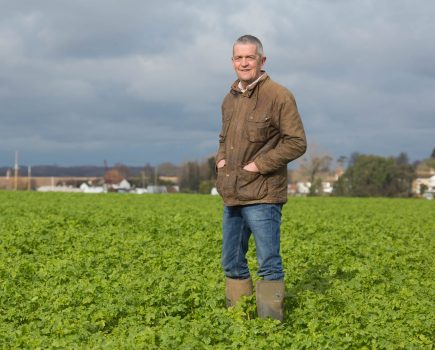 Last month I bought a new car for the very first time. Once it was home it just sat in the yard, looking pristine and, frankly, too clean and shiny to take to the roads and get covered with grime.
Last month I bought a new car for the very first time. Once it was home it just sat in the yard, looking pristine and, frankly, too clean and shiny to take to the roads and get covered with grime.
This was an entirely unexpected reaction. I’m not a car-proud person, to the point that generally it will only ever get a wash if it goes into the garage, but even the thought of leaving it in the supermarket car park was too risky to contemplate. But a few weeks on and the car has become what it was intended to be and it’s ‘situation normal’ – there are mud splatters on the paintwork and food in the house once again.
I’m feeling the same way about Revysol. A brand-new azole fungicide that rewinds the clock and works as well as azoles used to, that’s exciting. But at the same time, I’d almost rather it stayed firmly nestled its box where it can come to no harm. The one lesson we’ve learned about azole chemistry is that Revysol will most likely never be as good again after it’s been widely used for a number of years. Or will it be the one to buck the trend?
There’s a buzz of excitement emanating from BASF HQ about the launch of their new Revysol-containing product, Revystar XE, and rightly so. It’s been an amazing achievement to breathe new life into a group of chemistry which had been deemed on its last legs. In reality the azoles have had bad press. They may have suffered a huge decline in their curative performance, but in the field azole protective performance has been hanging on and still delivering a useful contribution to septoria control – albeit less than they used to. The azoles have been remarkably resilient given the exposure they’ve had, with a decline happening slowly over a relatively long period of time.
The smart money would probably go on the septoria pathogen finding a way of stopping this super-flexible azole from binding to its target site. But the truth is no one really knows whether this will happen and, if it does, then just how quickly is also a big unknown. Our already highly-adapted septoria population is a very different environment to the one any previous azole has ever been launched in to. Has the pathogen evolved as far as it can go already, or will it be able to evolve a nifty new mutation that can reduce Revysol’s efficacy without damaging its own ability to thrive? It’s going to be fascinating to see whether septoria can ultimately rise to this new Revysol challenge.
What we do know is that taking every measure to stack the odds in Revysol’s favour is the wise approach to prolonging the useful life of this badly needed new fungicide. The older azoles have provided a useful opportunity to learn about how to slow the development of resistance and this has been put to good use to help stabilise the SDHIs once they showed early signs of weakening. The fact that Revysol is only available in formulation with BASF’s SDHI, fluxapyroxad, as Revystar bears testimony to the fact that combining groups of chemistry has been proven to protect fungicide performance.
We also know that the dose rate and number of applications of an azole affect the selection pressure that septoria pathogens are under. Mother Nature has already done her bit this autumn/winter to limit the new active’s exposure in the coming season, with a much-reduced area of winter wheat in the ground which will have a big impact on fungicide use. As far as dose rate is concerned, there’s still more an element of judgement than science involved in determining field rates of fungicide.
In time, science will continue to help us optimise fungicide use in the field, from both the grower margin and resistance management perspectives. But right now, we have a new azole with some very interesting attributes to celebrate and its arrival is timely. BASFs older azole epoxiconazole remains under threat from the regulators and, should it go, the last azoles standing will welcome the assistance of a younger, more agile member of the family in dealing with a septoria population that has a lot more fight than it used to.
Based in Ludlow, Shrops, CPM technical editor Lucy de la Pasture has worked as an agronomist. @Lucy_delaP




